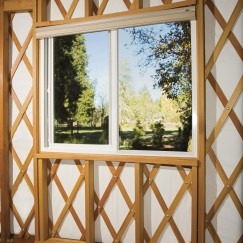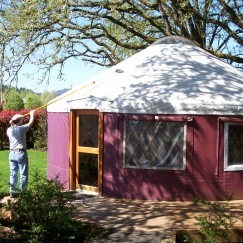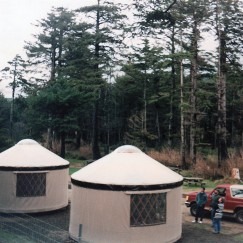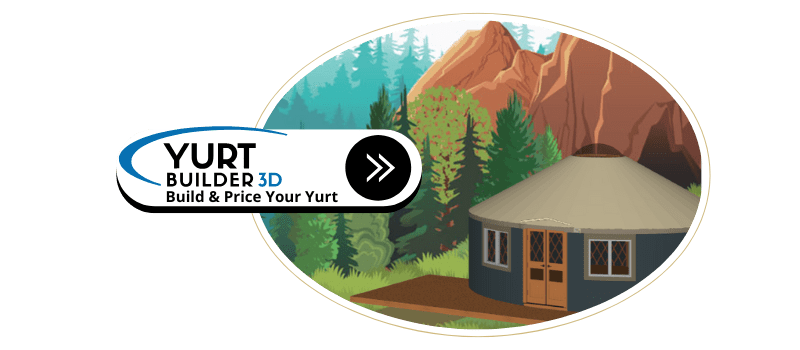Starting an Airbnb with Yurts: Faster to Market, Higher ROI
For a lot of people, the hardest part of starting an Airbnb is the upfront cost. Buying a second home or building a cabin is a big commitment. A yurt offers another way in. Instead of taking on a full house build, you can start with a single, well planned structure that goes up quickly, costs less, and still gives guests a memorable place to stay.
At Pacific Yurts, we have seen owners use one or more yurts to create everything from a simple side income to full glamping businesses. This post walks through why yurts work for any host experience level (including entry!) and what to think about before you launch.
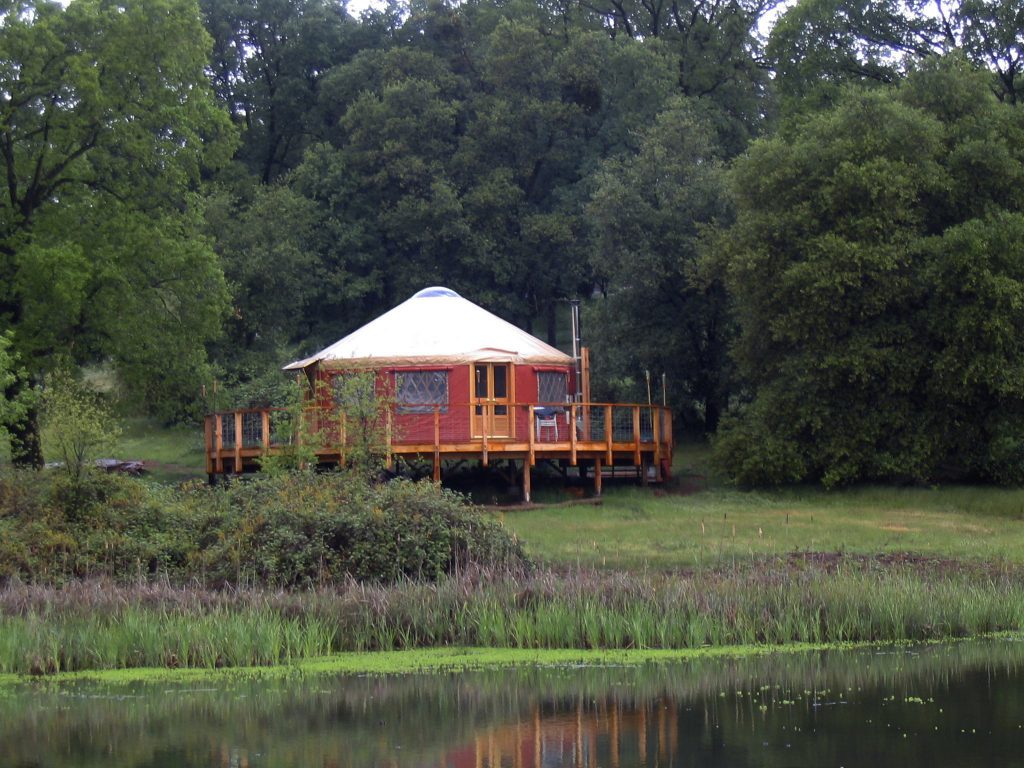
Why Yurts Work For First-Time Hosts
Pacific Yurts are engineered, fabric-covered structures designed for long term use in a variety of climates. You will find them in state parks, campgrounds, resorts, and private rentals.
Because a yurt is not a full conventional house, the entry cost is lower. As of 2025, base prices for our standard sizes generally fall in the high $8,000 to low $20,000 dollar range, depending on diameter and options. That is often less than building a similar sized cabin or tiny home.
Yurts also fit naturally into Airbnb’s “unique stays” and glamping categories. In our article on renting yurts on Airbnb, we note that Airbnb estimates the average host could earn about $1,500 per month, and that many yurt listings start at around $55 per night, with higher rates in strong locations or with premium amenities.
For a first time host, this combination of lower upfront cost and solid earning potential is what makes yurts worth considering.
Faster To Market Than Traditional Builds
Speed matters when you are trying to get your first listing live. A Pacific Yurt arrives as a complete kit. Once your platform and utilities are in place, most owners can assemble the structure in a matter of days, following the step-by-step instructions that come with every yurt. Pacific Yurts -+1
That shorter timeline helps you:
- Start taking bookings sooner.
- Avoid the long, unpredictable build schedules that sometimes come with conventional construction.
Our Yurt Builder 3D tool also lets you experiment with sizes, features, and pricing before you commit, so you have a clear picture of your structure cost as you plan. Pacific Yurts –
A Real World Income Example
To show what is possible, we published a case study on Sky Ridge Yurts, a glamping business in North Carolina. Pacific Yurts -+1
In one example from that case study:
- A 20 foot Pacific Yurt with optional features had a purchase price of $16,795.
- The average nightly rate was $130.
- The yurt stayed booked most of the year, with an occupancy rate of 84.5%.
- That added up to just under $40,000 in gross revenue per year from that single yurt.
This is not a guarantee, but it does show how a relatively modest structure cost can turn into strong income when the location, pricing, and guest experience line up.
Cost Breakdown For Entry-Level Operators
Only the yurt structure pricing comes directly from Pacific Yurts. The other numbers here are planning ranges, since actual costs depend on your site, climate, local rules, and how finished you want the space to be.
1. Yurt Structure
Our “How Much Does a Yurt Cost?” guide explains that base prices for our six standard sizes start around $8,000 and go up with diameter and features. Pacific Yurts -+1 The current Yurt Builder 3D tool shows typical base prices in roughly the $9,000 to $20,000 range before options.
Popular upgrades for rentals include:
- Insulation packages
- Extra windows or glass window systems
- Snow and wind kits in harsher climates Pacific Yurts -+1
Our planning guide notes that many people end up in the $20,000 to $25,000 range for a well equipped 20 foot yurt, and higher for larger sizes with more options.
2. Platform and Site Preparation
The platform is separate from the yurt price. A simple wood platform on a fairly level site might be a few thousand dollars. Sites that are steep, rocky, or far from access can cost more. Our planning resources recommend budgeting for:
- Platform materials and labor
- Basic site grading if needed
- Access paths or small driveways where appropriate
3. Utilities
You can go off grid, fully connected, or somewhere in between.
- Off grid: Solar power and a composting toilet can keep installation costs lower but take more planning up front. Pacific Yurts –
- Full hookups: Power, water, and septic or sewer give guests a more traditional experience and may support higher nightly rates, but trenching and utility work add cost.
Our general advice is to talk with local contractors early so your budget reflects real numbers for your area.
4. Interior Furnishings and Finishes
Inside, think of your yurt like a small studio. Most successful Airbnb yurts include:
- A comfortable bed and quality bedding
- Seating and small storage solutions
- Good lighting and a simple decor style that matches the setting
- Optional items like a small kitchenette or coffee station
Many first time hosts keep furnishings to a few thousand dollars by blending new and secondhand pieces.
5. Permitting and Fees
Short term rental rules, building codes, and health department requirements vary widely. Our planning article suggests contacting your local planning or building department early so you know:
- Whether a yurt is allowed on your property
- What permits you need
- Any specific requirements for rentals, bathrooms, or kitchen spaces
Building these costs into your plan from the start prevents surprises later.
A Simple Path To Getting Started
Here is a straightforward path you can follow if you want to start hosting with a yurt:
- Check zoning and rental rules
Confirm you can host short term rentals on your land and that a yurt is an approved structure type. - Choose a site guests will love
Views, privacy, access to water or trails, and a quiet setting go a long way. Many of our customer stories highlight that the combination of a strong setting plus a comfortable yurt is what keeps bookings high. Pacific Yurts -+1 - Match the yurt to your climate
Use the right insulation, roof options, and heating or cooling systems for your weather so guests are comfortable in the seasons you want to rent. - Plan the whole guest experience
Think about parking, paths, outdoor lighting, seating areas, and small touches like a fire ring where allowed. Guests remember how the stay felt, not only the structure itself. - Write a clear, inviting Airbnb listing
Explain that the stay is in a Pacific Yurt, describe what is inside, and highlight what makes your location special. Our Airbnb income article recommends using Airbnb’s own earnings tool to set realistic expectations and adjust your pricing as you go. Pacific Yurts -+1
A Measured, Efficient Way To Start Hosting
Starting an Airbnb with a yurt is not about skipping planning. It is about simplifying the pieces you need to plan for. The structure cost is clear, the build process is well documented, and there are plenty of examples of strong performance when location and guest experience are done well.
For entry level operators who want to move from idea to first booking without taking on a full scale home build, a yurt can be a practical starting point. The details will depend on your land, climate, and local rules, but the basic path stays the same: plan carefully, budget realistically, and create a stay that people are excited to book again.


